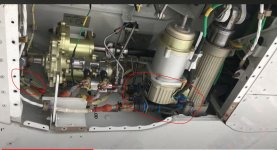I used them throughout the plane. I didn't know how to lace the wires. Apparently, the folks at the Intuitive company that successfully landed on the Moon used zipties throughout their Moon lander. I know that we in aviation overthink a lot of things but here is the proof that zip ties are on the Moon.

 spacenews.com
spacenews.com
Picture of the lander overlooking the Moon. Look at all the zip ties wrapping the cable bundles closest to the camera.

Intuitive Machines lands on the moon
A robotic lander developed by Intuitive Machines landed safely on the moon Feb. 22, becoming the first privately developed spacecraft to land there.
 spacenews.com
spacenews.com
Picture of the lander overlooking the Moon. Look at all the zip ties wrapping the cable bundles closest to the camera.








